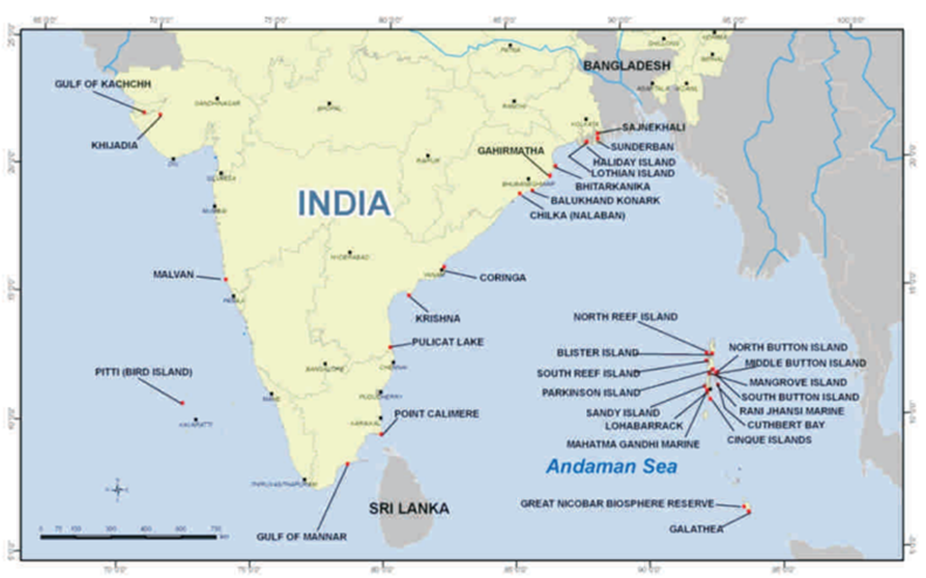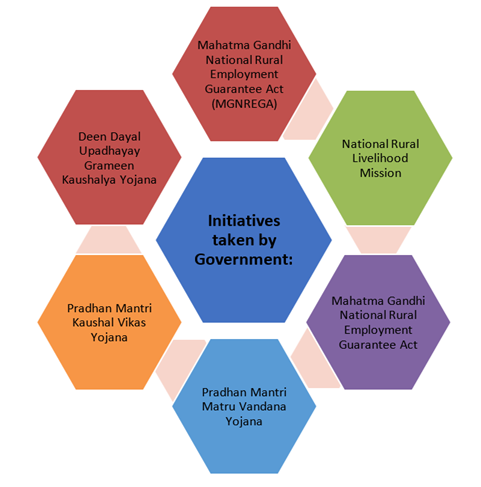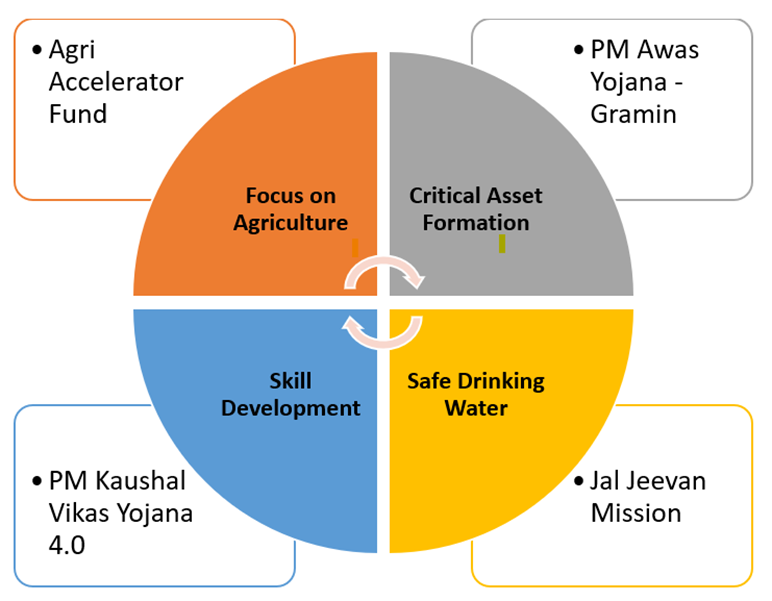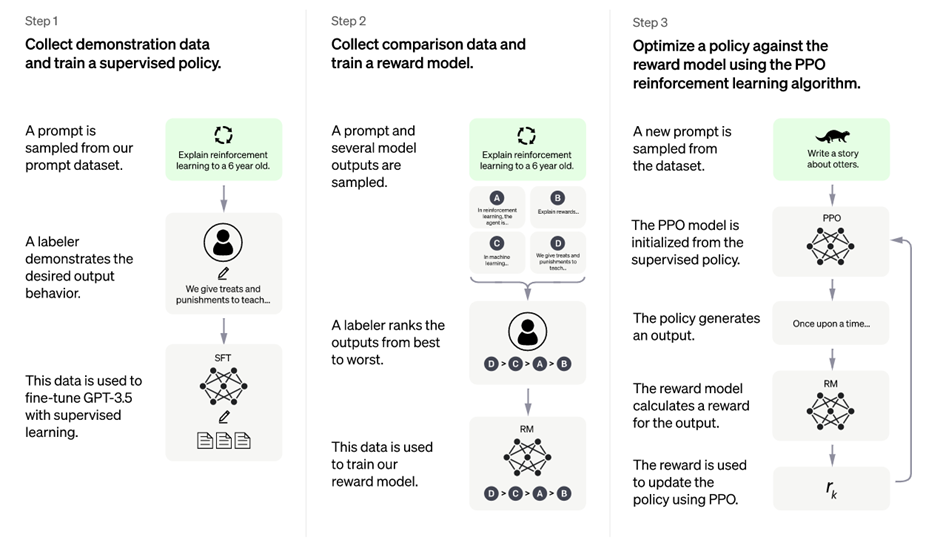Monday, 13th February 2023
The Growth Triad - India Infrastructure Push
In News: In this article CEO NITI Aayog writes about the focus of Indian government policies on physical, digital and social infrastructure. Since 2014, India’s development story has been closely linked with a strong focus on not just physical, but also social and digital infrastructure. The Government of India’s capital expenditure as a percentage of GDP increased from 1.7 per cent in 2014 to nearly 2.9 per cent in 2022-23.
Infrastructure is universally acknowledged as a key driver of growth. Traditionally, though, infrastructure is associated with physical assets, typically roads, ports, power transmission lines, etc.
An increase in investments will not only create vital physical infrastructure and improve connectivity that will accelerate the movement of passengers and freight, but also create jobs, spur private investments, and provide a cushion against global headwinds.
Investment in Physical Infrastructure: The direct capital investment by the Centre has been further supplemented by a one-year extension of the 50-year interest-free loan to state governments to encourage infrastructure investment and incentivise complementary policy actions, with a significantly increased outlay of Rs 1.3 lakh crore.
- This will lead to decentralised infrastructure development in urban and peri-urban areas across regions. Increasing allocations to PM Awas Yojana by 66% will not only provide rural workers with housing but also create jobs.
Investment in Digital Infrastructure: This digital transformation of India is happening in two phases.
- The first phase started in 2015 and was led by the JAM trinity — Jan Dhan, Aadhaar and mobile linkages, and the Digital India programme. The success of citizen-centric services such as the Unified Payments Interface (UPI), large-scale adoption and reach (DigiLocker, MyGov), and the vaccine journey (CoWin) are all significant and successful milestones in India’s first phase of public digital infrastructure creation.
- The second phase of digital transformation is now being led by the development, application, and large-scale expansion of cutting-edge technologies such as 5G, the Internet of Things (IoT), artificial intelligence (AI), quantum computing, mechatronics, robotics, and more.
Investment in Social Infrastructure: It includes education and skilling, public health and nutrition, drinking water and sanitation — can lead to a more productive and proficient workforce, reduced mortality, wasting and stunting, increased social mobility and a higher quality of life. These factors contribute to a stronger and more inclusive economy and holistic development.
- Aspirational Districts Programme spearheaded by NITI Aayog through data-driven governance has resulted in consistent macro improvements in key socioeconomic indicators at the district level, the emphasis on digital land records under the SVAMITVA Scheme of the Ministry of Panchayati Raj is a structural reform in rural land management that leads to individual economic empowerment.
Concerted thrust on the creation, maintenance and expansion of physical, digital and social infrastructure has emerged as a systemic focus of India’s unique development model. This infrastructure triad will be the enabler of growth and leveller of opportunities.
Source: Indian Express
GSI Discovers Lithium Resources in J&K
In News:
- Union government confirms the first discovery of lithium reserves in the country in Jammu and Kashmir.
About the News:
- Geological Survey of India (GSI) has recently established the findings of lithium resources of 5.9 million tonnes in the Salal-Haimana area of Reasi District of Jammu.
- Government has been prospecting this part of the "Reasi Sersandu-Kherikot-Rahotkot-Darabi" mineral block since 2021-22.
- The GSI follows different stages of mineral exploration as per UNFC and the Minerals (Evidence of Mineral Contents) Amendment Rules
- Under the United Nations Framework for Classification for Reserves and Resources of Solid Fuels and Mineral Commodities (UNFC 1997), the stage of prospecting is categorised as ‘G4’ when it entails reconnaissance surveys — a fairly advanced stage of prospecting.
- The finds in this case are learnt to include bauxite (the ore for aluminium) and rare earth elements, alongside lithium.
- The lithium find is categorized as "inferred" with a low level of geological confidence and small compared to proven reserves in other countries.
- This is part of a domestic exploration push for lithium which is a vital ingredient in Lithium-ion rechargeable batteries.
Importance of lithium for India:
- India is currently importing all its lithium and is dependent on imports of lithium-ion energy storage products, mainly from China.
- India is trying to enter the lithium value chain with EVs predicted to be a sector ripe for disruption in 2023.
- Over 165 crore lithium batteries were imported into India between FY17 and FY20, costing $3.3 billion.
- India has potential to recover lithium from brines in Rajasthan and Gujarat and from mica belts in Odisha and Chhattisgarh.
- The demand for these batteries is expected to grow significantly in the coming years, creating opportunities for the production and supply of lithium.
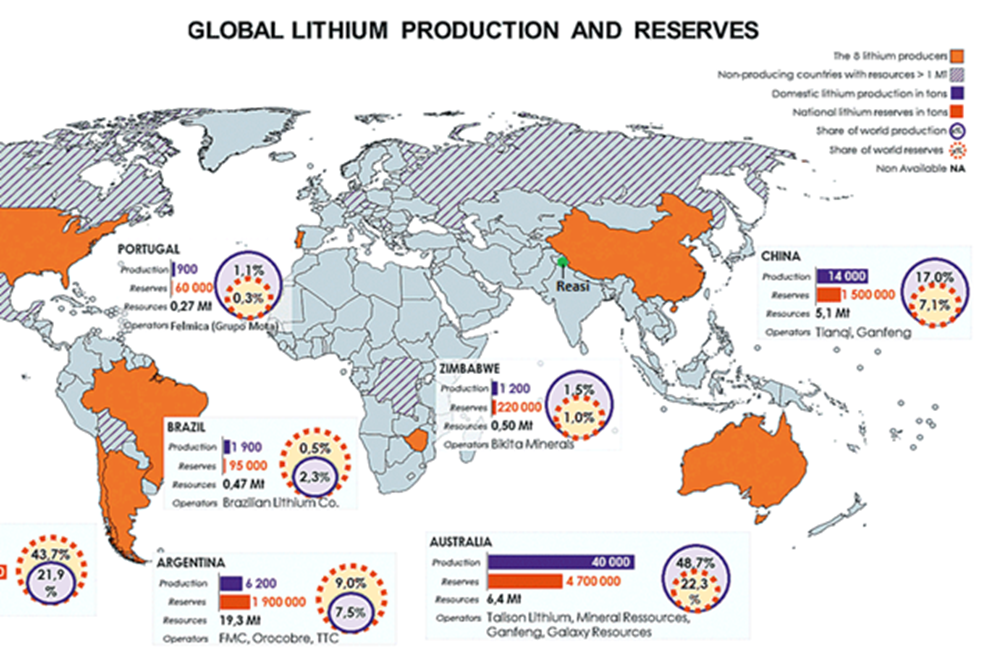
Advantages of lithium
- Lithium is a light and soft metal with a low density, which makes it an ideal component for batteries in portable electronic devices.
- It can be extracted through solar evaporation of brine pools or hard-rock extraction of the ore.
- Lithium batteries have a high energy density, meaning they can store a lot of energy in a small package, which makes them ideal for use in electric vehicles and other applications where weight and size are important factors.
- Li-batteries have a long lifespan and can be recharged many times without losing their ability to store energy, which makes them a cost-effective solution for a wide range of applications.
- It is also an essential component in the production of glass and ceramics, as well as certain alloys used in the aerospace industry.
Major issues:
- Limited Supply: Global supply of lithium is limited, and demand is increasing rapidly which could lead to a shortage of lithium in the future.
- Geographical Concentration: Most of the world's lithium reserves are concentrated in a few countries, such as Australia, Chile, and Argentina making the lithium market vulnerable to supply disruptions and price fluctuations.
- Environmental Concerns: Extracting lithium from the mountain regions can have a significant impact on the environment, particularly in terms of water usage and contamination affecting local communities and ecosystems.
- High Production Costs: Lithium production is a complex and costly process, which can make it difficult for smaller companies to enter the market thus limiting the profitability of lithium mining and production.
Competition from Alternative Sources: There is growing competition from alternative sources of energy storage, such as sodium-ion batteries and solid-state batteries, which could reduce demand for lithium in the future.
Source: Indian Express
DISINVESTMENT - Edukemy Current Affairs
In News:
In the Union Budget for 2023-24, the government has set a disinvestment target of ₹51,000 crores, down nearly 21% from the budget estimate for the current year and just ₹1000 crore more than the revised estimate.
About the News:
The disinvestment target of the government in Budget 2023-24, is the lowest in seven years.
- The Centre has also not met the disinvestment target for 2022-23 so far
- It has realised ₹31,106 crore to date, of which, ₹20,516 crore came from the Initial Public Offering (IPO) of 3.5% of its shares in the LIC.
- The Centre is not going to add new companies to be divested in 2023-24.
- According to Department of Investment and Public Asset Management (DIPAM), the government has decided to stick to the already-announced and planned privatisation of State-owned companies which include:
- IDBI Bank,
- the Shipping Corporation of India (SCI),
- the Container Corporation of India Ltd (Concor),
- NMDC Steel Ltd,
- BEML,
- HLL Lifecare, and so on.
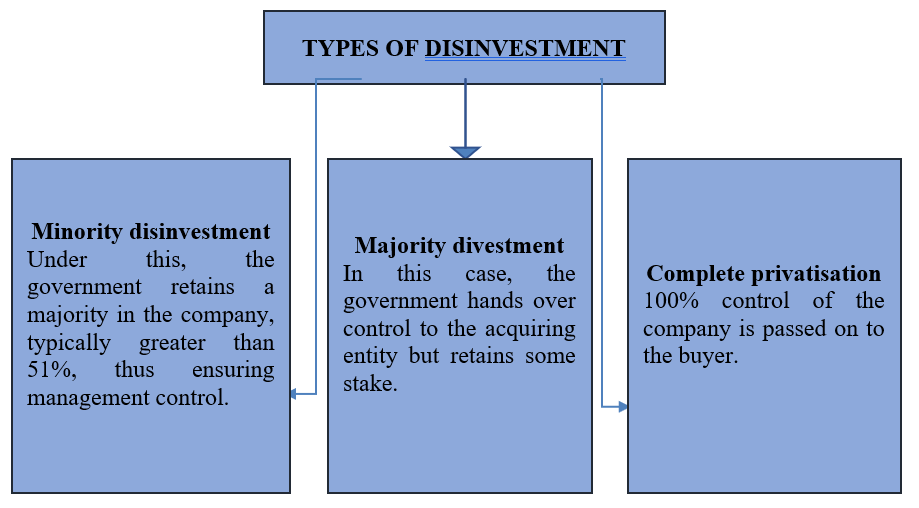
Why does the government undertake disinvestment?
The government may disinvest –
- To reduce the fiscal burden or bridge the revenue shortfall for that year.
- To finance the fiscal deficit.
- To invest in the economy and development or social sector programmes.
- To retire government debt.
- To encourage private ownership of assets and trading in the open market.
- To not have to fund the losses of a loss-making unit anymore.
How has the union government fared in disinvesting?
- Purpose: Disinvestment should ideally be driven by the long-term vision of the government on the extent to which it wants to privatise the economy and the sectors where it needs to retain a presence — and not by the need to raise revenues.
- The government’s reliance on disinvestment proceeds to bridge the gap in the Budget has been increasing.
- Long-term rationale: The profitable oil refining and marketing company BPCL, which was put up for divestment, had been paying healthy dividends and made investments in upstream energy resources.
- Disinvestment to another PSE: When the Centre exceeded its target in 2017-18, it earned ₹36,915 crore by selling Hindustan Petroleum Corporation Limited (HPCL) to the state-owned Oil and Natural Gas Corporation (ONGC).
- In 2018-19, REC Limited was sold to the state-owned Power Finance Corporation Limited, through which the government raised ₹14,500 crores.
- Missing targets: In 2021-22, when Air India was added to the Tata group, the Centre missed its high disinvestment target of ₹1.75 lakh crore by a significant margin, raising just ₹13,534 crores in disinvestment proceeds.
- Withdrawal of investors: The sale of the 52.8% stake in Bharat Petroleum (BPCL) had to be called off in mid-2022 because almost all the bidders had withdrawn.
The strategic sale of Central Electronics was also shelved due to lapses in the bidding process and the Pawan Hans stake sale did not take off as well.
Source: The Hindu
Small Satellite Launch Vehicle D2
In News
The Small Satellite Launch Vehicle D2 (SSLV-D2) was launched successfully from the first launch pad at the Satish Dhawan Space Centre SHAR, Sriharikota. It placed the ISRO earth observation satellite EOS-07 and two co-passenger satellites Janus-1 and AzaadiSat2, developed by start-ups, in a 450-km circular orbit around the Earth.
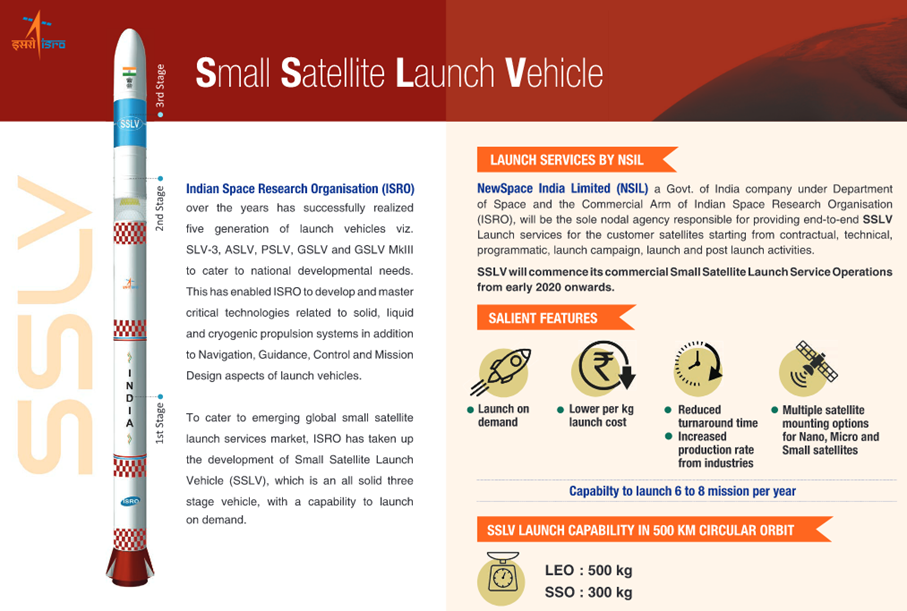
About
- Janus: It is a technology demonstrator satellite built by US-based Antaris and its Indian partners XDLinks and Ananth Technologies.
- The company aims to make satellite buses of different sizes.
- Janus weighs only 10.2 kg and is a six-unit cube satellite with five payloads on board — two from Singapore, and one each from Kenya, Australia, and Indonesia.
- AzaadiSat2: The payloads like LoRa amateur radio and sensors to measure radiation levels in space, have been built by 750 girl students from across India.
- A similar satellite by SpaceKidzIndia was launched aboard SSLV-D1.
- The satellite is expandable. It has a spring mechanism-based external frame, which will open up once the satellite is in orbit. After the frame opens up, the satellite will become four times its size.
- This expandable external frame hosts multiple new cheaper types of solar panels to provide prolonged energy to the satellite.
- The small size at the time of launch with a bigger power pack means the satellite will easily fit in the launch vehicles, and start-ups will spend less on launch services.
- SpaceKidzIndia: It aims to promote space awareness among children.
Source: Indian Express
SWAYAM - Edukemy Current Affairs
In News
With 2.4 crore enrolling for courses which yield credits and with over 26 lakh having earned them, the government-run Swayam Massive Open Online Courses (MOOC) has outperformed any other e-Learning platform by a big margin.
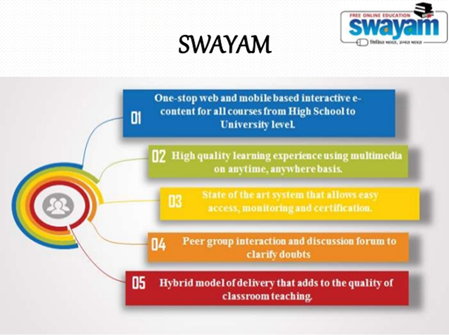
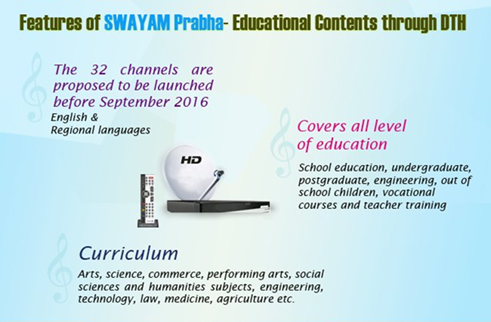
About
- SWAYAM is a programme initiated by Government of India with the help of NPTEL, IIT Madras, Google Inc. and Persistent Systems Ltd. in 2017 to achieve the three cardinal principles of Education Policy:
- Access,
- Equity, and
- Equality.
- It is developed by the Ministry of Education and AICTE with the tie-up with Microsoft and provides over 2000 courses and over 80000 hours of learning for the students.
- SWAYAM follows the concept of MOOCs (Massive Open Online Courses) which is a concept of providing online courses to a wide section of people over a platform of learning and e-education.
Objective: To make best teaching learning resources available to all, including the most disadvantaged.
- Content: SWAYAM platform hosts courses from Class 9 till post-graduation to be accessed by anyone, anywhere at any time.
- There are over 3000 MOOC free courses.
- More than 1,000 specially chosen faculty and teachers from across the country have participated in preparing these courses.
- Audio-video and multimedia have also been used.

Source: TOI
Expunging in Parliament - Edukemy Current Affairs
In news
Recently the portions of Congress’s leader’s speech in Lok Sabha were expunged.
About
- Expunged words are those that are considered unparliamentary and hence the media cannot use such speeches for telecast.
- Under Art 105(2) of the Constitution no MP is liable to any court proceedings in respect of anything said in the Parliament. However, the freedom of speech in the House is limited by the Ruless of House.
- Procedure of Conduct of Business in Lok Sabha
- Rule 380: The MPs cannot use defamatory of indecent or unparliamentary words inside the House.
- Rule 381: It states that the expunged portions shall be marked by asterisk and an explanatory footnote should also be attached to it.
- The decision on which parts of the proceedings are to be expunged lies with the Presiding Officer of the House- Speaker and Chairman.
Unparliamentary expressions
- The unparliamentary expressions are kept out of Parliament’s records.
- The Lok Sabha Secretariat has brought out a bulky volume of ‘Unparliamentary Expressions’. This book contains words or expressions that would likely be considered rude or offensive in most cultures. But it also contains content that would appear to be fairly harmless and innocuous.
- At the time of first compilation, references were taken from debates and phrases (that had been) declared unparliamentary by the pre-Independence Central Legislative Assembly, Constituent Assembly of India, the Provisional Parliament, the first to the tenth Lok Sabha and Rajya Sabha, state legislatures, and Commonwealth parliaments like that of the United Kingdom.
- The decision to expunge a word or portion of a speech is taken by the Speaker under Rule 380, based on a recommendation from the head of the reporting section, taking into account the context in which the word or sentence was used.
Source: Indian Express
Digital Payment Utsav - Edukemy Current Affairs
In news
- Recently, the Ministry for Electronics & Information Technology launched the ‘Digital Payments Utsav’, a campaign promoting digital payments across India along with the launch of several significant initiatives.
Key highlights
- The event focuses on promoting digital payments as part of G20 Digital Economy Working Group event.
- The event acknowledged performance of banks and fintech companies for promoting digital payment by giving 28 Digi Dhan Awards.
- The campaign is expected to bring together various stakeholders to promote financial inclusion.
- These initiatives will expand the reach of the Unified Payment Interface (UPI) in India and beyond. The focus is on connecting the unconnected areas of India and making UPI a global payment method.
- The National Payments Corporation of India (NPCI) has already taken steps in this direction by partnering with some country
- Several significant initiatives were launched during the event, including a G20 Co-branded QR code, a G20 edition of the preloaded RuPay On-The-Go device, innovative products from banks and FinTechs, a joint campaign by MeitY and Delhi Police to promote secure digital payments, and a Coffee Table Book titled "Towards a Developed India Catalysing Inclusive Growth Through Digital Payments."
Source: PIB
NAMASTE: Transforming Sanitation Work
In News
Ministry of Social Justice & Empowerment (MoSJE) has formulated a scheme “National Action for Mechanized Sanitation Ecosystem” (NAMASTE). The process of extending the Scheme to all the Urban Local Bodies (ULBs) of the country has been initiated.
About
- It is a central sector scheme launched in 2022
- Nodal Ministry: Ministry of Urban Affairs and the Ministry of Social Justice and Empowerment
Main features
- Identification: NAMASTE envisages identifying the Sewer/Septic Tank Workers (SSWs).
- Occupational Training and distribution of PPE Kits to SSWs.
- Assistance for Safety Devices to Sanitation Response Units (SRUs).
- Extending Health Insurance Scheme Benefits to identified SSWs and their families under the Ayushman Bharat- Pradhan Mantri Jan Arogya Yojana (AB-PMJAY).
- Livelihood Assistance: The Action Plan will promote mechanization and enterprise development by providing funding support and subsidy (capital +interest) to the sanitation workers, to procure sanitation-related equipments.
- IEC Campaign: Massive campaigns would be undertaken jointly by the ULBs & NSKFDC to spread awareness about the interventions of NAMASTE.
Source: PIB
Asphyxiation - Edukemy Current Affairs
Why in news? Recently, 7 workers died due to asphyxiation while removing oil sludge in an edible oil tank in Andhra Pradesh.
About:
- Asphyxiation is the failure or disturbance of the respiratory process brought about by the lack or insufficiency of oxygen in the brain. The unconsciousness leads to death.
- Besides lack of oxygen in the brain, Asphyxia can also be caused by injury to or obstruction of breathing passageways, as in strangulation or the aspiration of food (choking) or large quantities of fluid (near-drowning or drowning).
Spices Board India - Edukemy Current Affairs
Why in news? Recently, the Spices Board has established eight crop-specific Spices Parks across the country.
About
- Spices Board is an autonomous body responsible for the export promotion of the 52 scheduled spices and the development of Cardamom (Small & Large).
- Function under the Ministry of Commerce & Industry.
- Headquarters- Cochin, Kerala
The main functions of the Spices Board are the following:
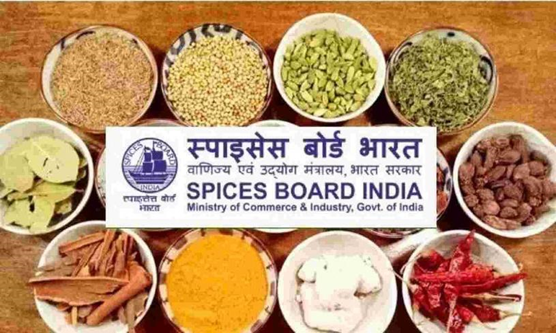
- Research, Development, and Regulation of domestic marketing of Small & Large Cardamom;
- Post-harvest improvement of all spices;
- Export promotion of all spices and assisting exporters in technology upgradation, quality management, brand promotion, research & product development;
- Development of spices in the North East;
- Regulation of quality of spices for exports through its quality evaluation services; etc.
About Spices Park
Objective: To set up common processing and value-addition facilities including cleaning, sorting, grading, grinding, oil extraction, and packaging of spices for use by the local farmers, traders, exporters, and other stakeholders.
Board established eight new spices parks, 2 Parks in Madhya Pradesh, 2 in Rajasthan, and 1 spices park in Andhra Pradesh, Uttar Pradesh, Kerala, and Tamil Nadu respectively.
Source: PIB
Innovations For Defence Excellence Scheme
Why in news? Recently, the innovations for Defence Excellence (iDEX) framework has been launched by the Government of India.
About iDEX
- iDEX aims to create an ecosystem to promote innovation and technology development in Defence and Aerospace.
- It will attract industries including MSMEs, start-ups, individual innovators, R&D institutes & academia.
- Nodal Agency: iDEX is funded and managed by Defence Innovation Organisation (DIO).
Objectives of IDEX:
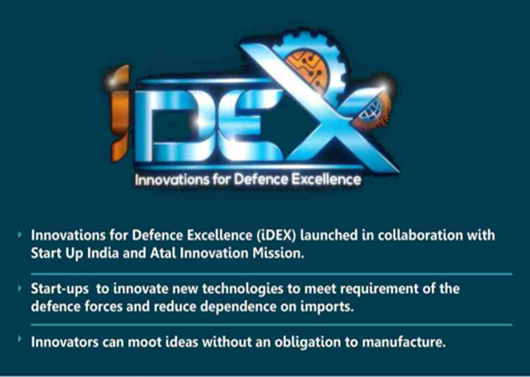
- It facilitates the rapid development of new, indigenized, and innovative technologies for the Indian defence and aerospace sector in shorter timelines.
- It creates a culture of engagement with innovative startups, to encourage co-creation for the defence and aerospace sectors.
- It Empowers a culture of technology co-creation and co-innovation within the defence and aerospace sectors.
About Defence Innovation Organization (DIO):
- DIO a not-for-profit Organisation, incorporated under Section 8 of the Companies Act.
- Hindustan Aeronautics Limited (HAL) & Bharat Electronics Limited (BEL) – Defence Public Sector Undertakings (DPSUs) are the founding members of DIO.
Source: PIB
Open Market Disposal Scheme (OMSS)
Why in news? To cool down the prices of wheat and atta, the Centre decides to offload 30 lakh metric tons of wheat under Open Market Disposal Scheme (OMSS).
About
- Under OMSS Scheme FCI sells surplus stocks of wheat and rice at predetermined prices through e-auction in the open market from time to time to enhance the supply of food grains.
- The objective of OMSS is to dispose of surplus stocks of wheat and rice held by FCI and to regulate the prices of wheat in the open market.
- FCI conducts weekly auctions for the OMSS for wheat on the platform of the National Commodity and Derivatives Exchange Limited (NCDEX).
- NCDEX is a commodity exchange platform in India that provides a platform for trading in various agricultural and other
- Under OMSS government sales to State Governments, KendriyaBhandar, National Consumer Cooperative Federation (NCCF), National Agricultural Cooperative Marketing Federation of India Ltd. (NAFED), State Cooperatives/ Federations etc.
Source: PIB
Keeladi - Edukemy Current Affairs
Why in news? In the latest development, the Sangam age has been pushed to 800 BCE based on the archaeological findings from Madurai.
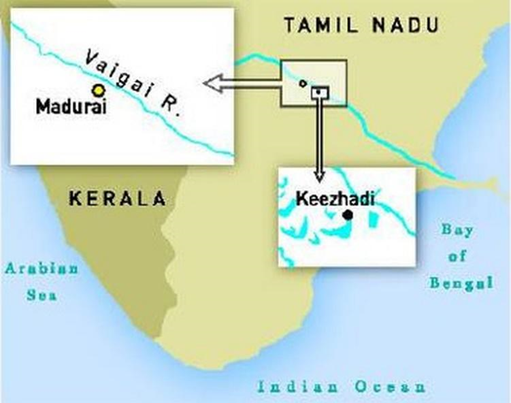
About:
- Keeladi is a hamlet located near Madurai city in Tamil Nadu.
- It is along the banks of River Vaigai.
- The ASI started its excavations in Keeladi in 2014.
- Evidence was found that the civilization at Keeladi, that is, the Sangam Age civilization is older than thought before.
- It has been classified into three periods:
- The pre-early historic period between 800 BCE to 500 BCE
- The mature early history between 500 BCE to the end of 1st century BCE
- Post-early history from 1st century BCE to 300 CE
Vaigai River
- It is an east-flowing river.
- The Vaigai river basin is an important basin among the 12 basins lying between the Cauvery and Kanyakumari.
This basin is bounded by the Cardamom Hills and the Palani Hills on the West and by the Palk Strait and Palk Bay on the East.
Source: The Hindu
Global Quality Infrastructure Index (GQII) 2021
Why in news? India’s national accreditation system under the Quality Council of India (QCI) has been ranked 5th in the world in the recent GQII 2021.
About:
- The GQII ranks the 184 economies in the world on the basis of quality infrastructure (QI).
- India’s overall QI system ranking continues to be in the Top 10 at the 10th position, with the standardization system (under BIS) at 9th and the metrology system (under NPL-CSIR) at the 21st position in the world.
- QI is the technical backbone for international trade, with metrology, standardization, accreditation, and conformity assessment services providing reliability and trust between trading partners.
- According to the report, the top 25 countries are mainly located in Europe, North America, and Asia-Pacific, with some exceptions, such as India (10th), Brazil (13th), Australia (14th), and Turkey (16th).
- The GQII measures the relative development of countries’ QI.
- The GQII rankings are published and presented post-facto for each year based on the data collected till the end of that year.
- It is an initiative on metrology, standardization, accreditation, and related services, supported by Physikalisch-Technische Bundesanstalt (PTB) and the Federal Ministry for Economic Cooperation and Development (BMZ), Germany.
About India Accrediting System
- QCI is the national body for accreditation, the Bureau of Indian Standards (BIS) is the main body for the formulation of standards, and the Council Of Scientific And Industrial Research - National Physical Laboratory (CSIRNPL) for the metrology system. "India's accreditation system is the youngest among the three QI pillars in India.
Source: PIB
CCI Greenlights MEIL's LAPL Acquisition
Why in news? Recently, CCI approves the acquisition of 100% equity and preference shares of Lanco Anpara Power Limited (LAPL) by Megha Engineering and Infrastructures Limited (MEIL) under Section 31(1) of the Competition Act, 2002.
About:
- CCI is a statutory body of the Government of India responsible for enforcing the Competition Act, 2002.
- On the recommendations of the Raghavan committee Monopolies and Restrictive Trade Practices Act, 1969 (MRTP Act) was repealed and replaced by the Competition Act, 2002.
- CCI is a quasi-judicial body that gives opinions to statutory authorities and also deals with other cases.
- Composition: One Chairperson and six Members, appointed by the Central Government.
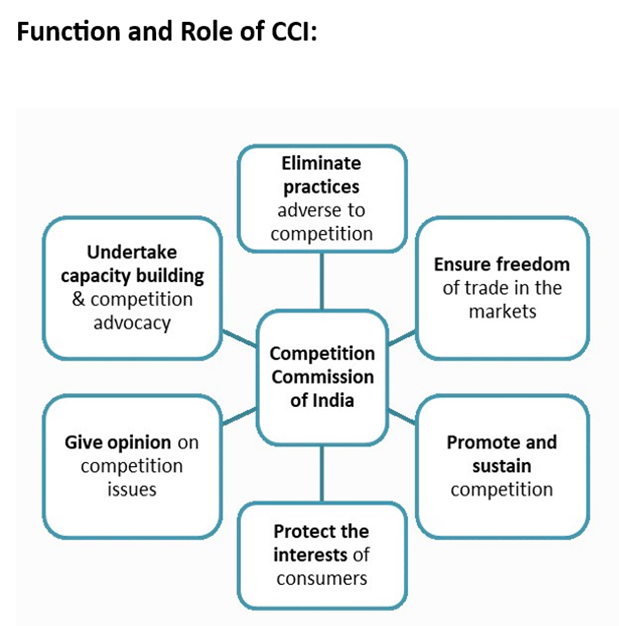
Competition Act, 2002
- The Act prohibits anti-competitive agreements, and abuse of dominant positions by enterprises and regulates combinations, which causes an appreciable adverse effect on competition within India.
- In accordance with the provisions of the Amendment Act, the Competition Commission of India and the Competition Appellate Tribunal have been established.
- The government replaced the Competition Appellate Tribunal (COMPAT) with the National Company Law Appellate Tribunal (NCLAT) in 2017.
Source: PIB
Share the article
Get Latest Updates on Offers, Event dates, and free Mentorship sessions.

Get in touch with our Expert Academic Counsellors 👋
FAQs
UPSC Daily Current Affairs focuses on learning current events on a daily basis. An aspirant needs to study regular and updated information about current events, news, and relevant topics that are important for UPSC aspirants. It covers national and international affairs, government policies, socio-economic issues, science and technology advancements, and more.
UPSC Daily Current Affairs provides aspirants with a concise and comprehensive overview of the latest happenings and developments across various fields. It helps aspirants stay updated with current affairs and provides them with valuable insights and analysis, which are essential for answering questions in the UPSC examinations. It enhances their knowledge, analytical skills, and ability to connect current affairs with the UPSC syllabus.
UPSC Daily Current Affairs covers a wide range of topics, including politics, economics, science and technology, environment, social issues, governance, international relations, and more. It offers news summaries, in-depth analyses, editorials, opinion pieces, and relevant study materials. It also provides practice questions and quizzes to help aspirants test their understanding of current affairs.
Edukemy's UPSC Daily Current Affairs can be accessed through:
- UPSC Daily Current Affairs can be accessed through Current Affairs tab at the top of the Main Page of Edukemy.
- Edukemy Mobile app: The Daily Current Affairs can also be access through Edukemy Mobile App.
- Social media: Follow Edukemy’s official social media accounts or pages that provide UPSC Daily Current Affairs updates, including Facebook, Twitter, or Telegram channels.

